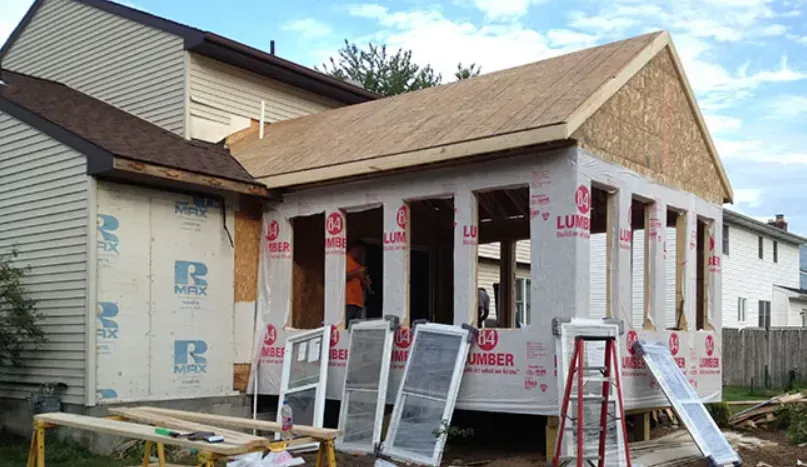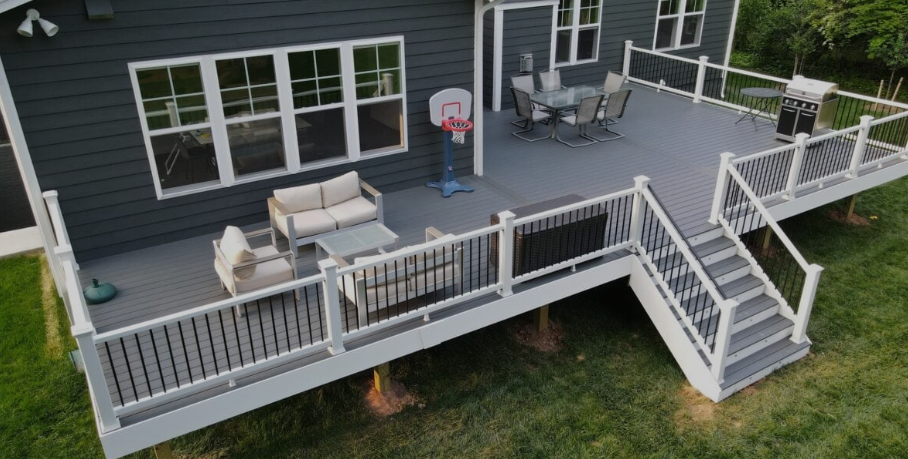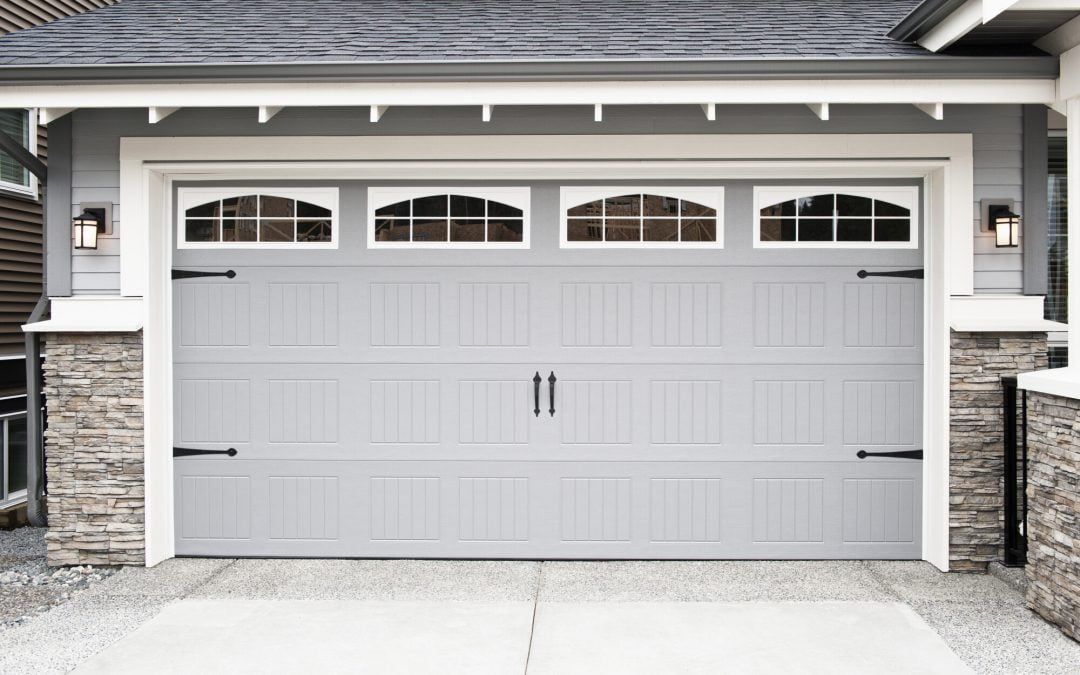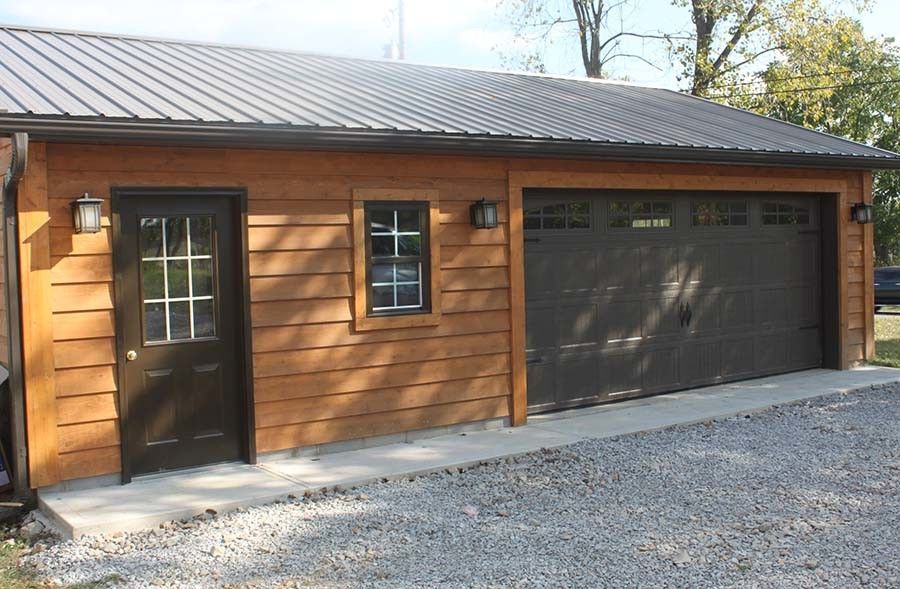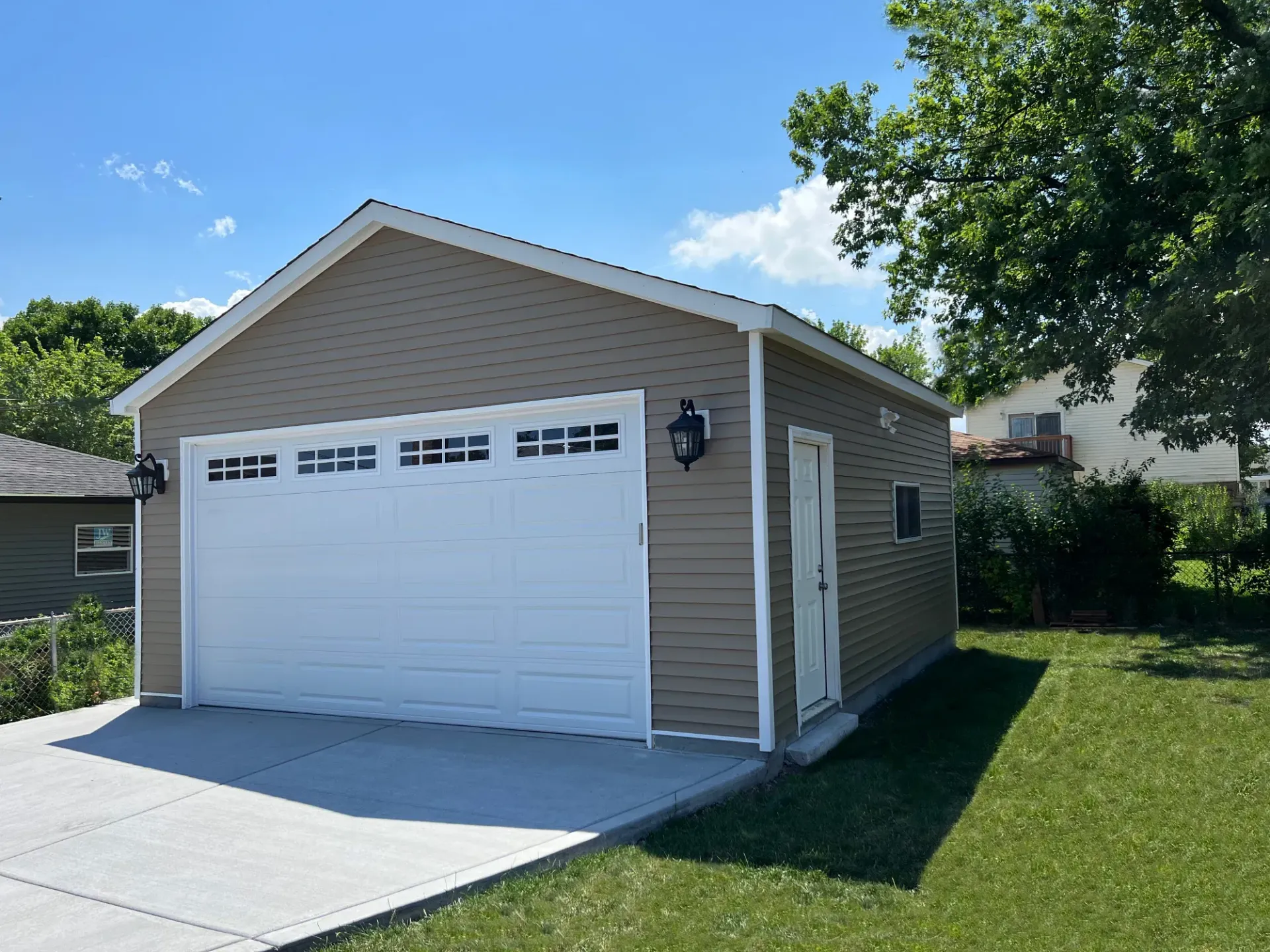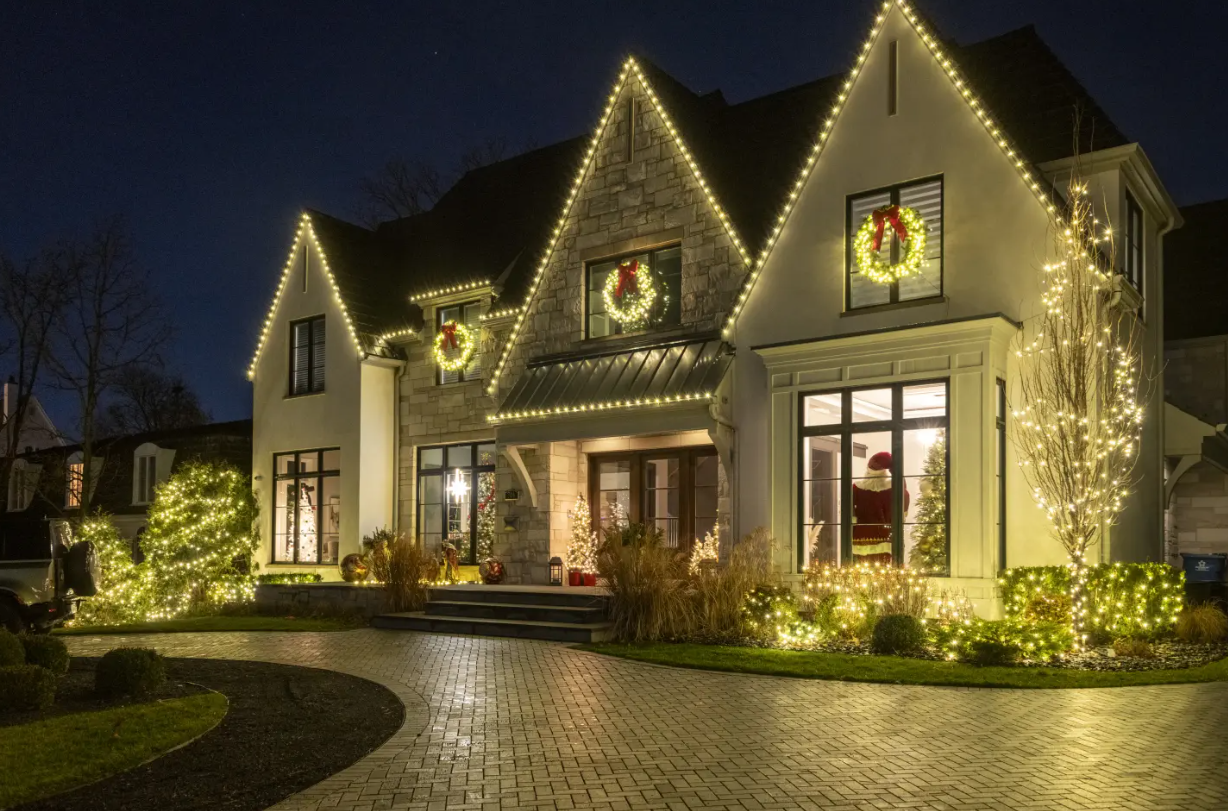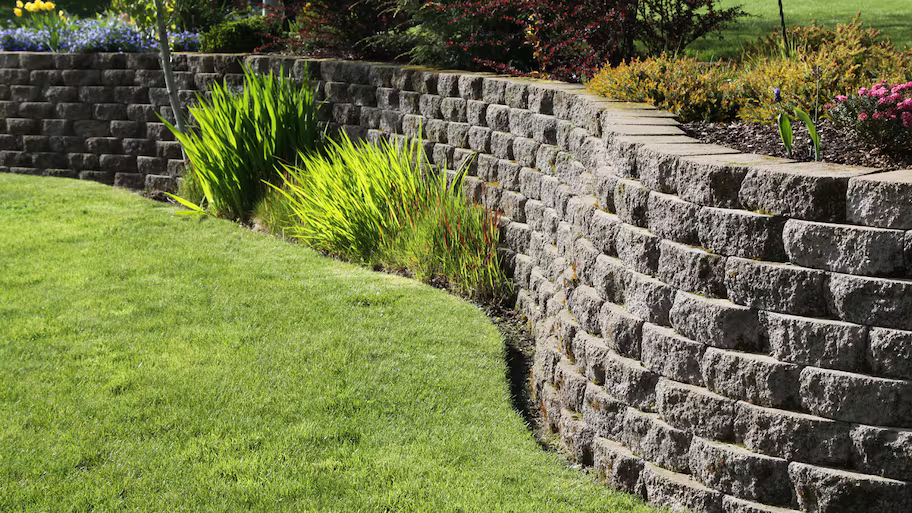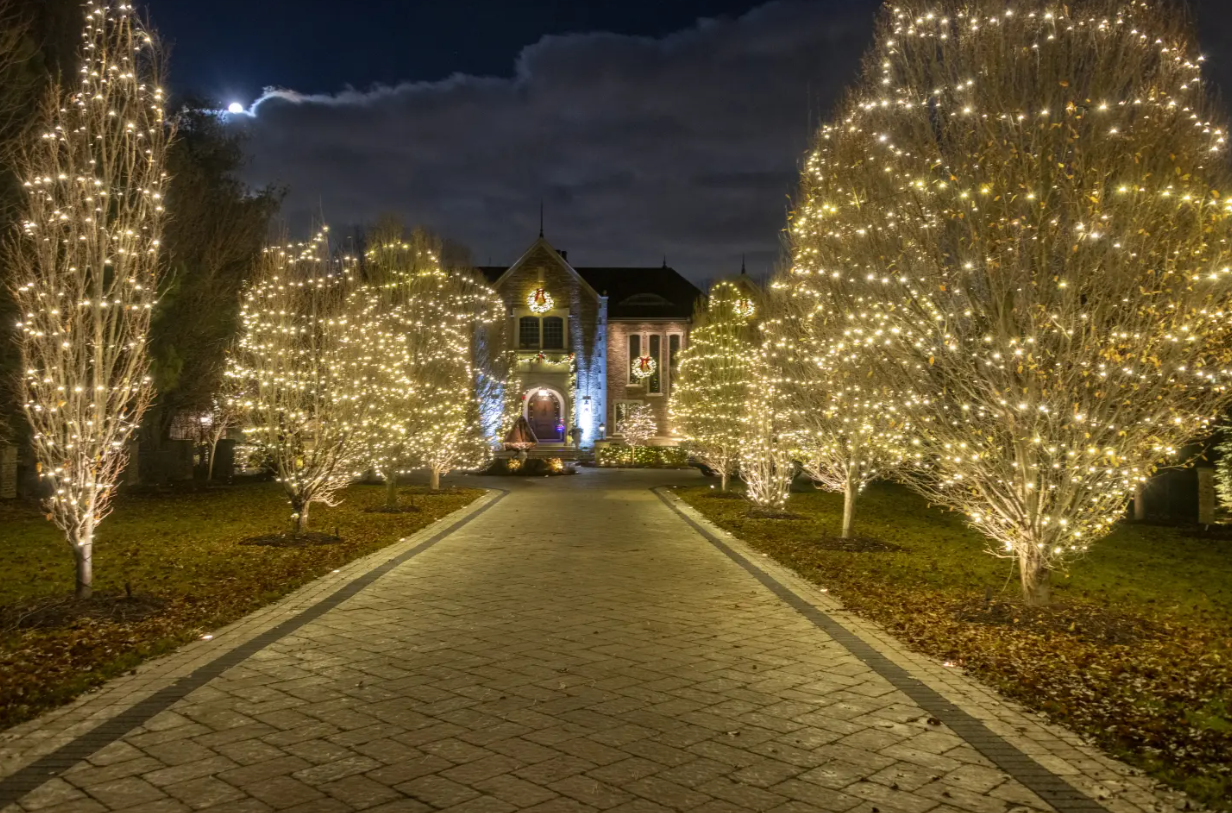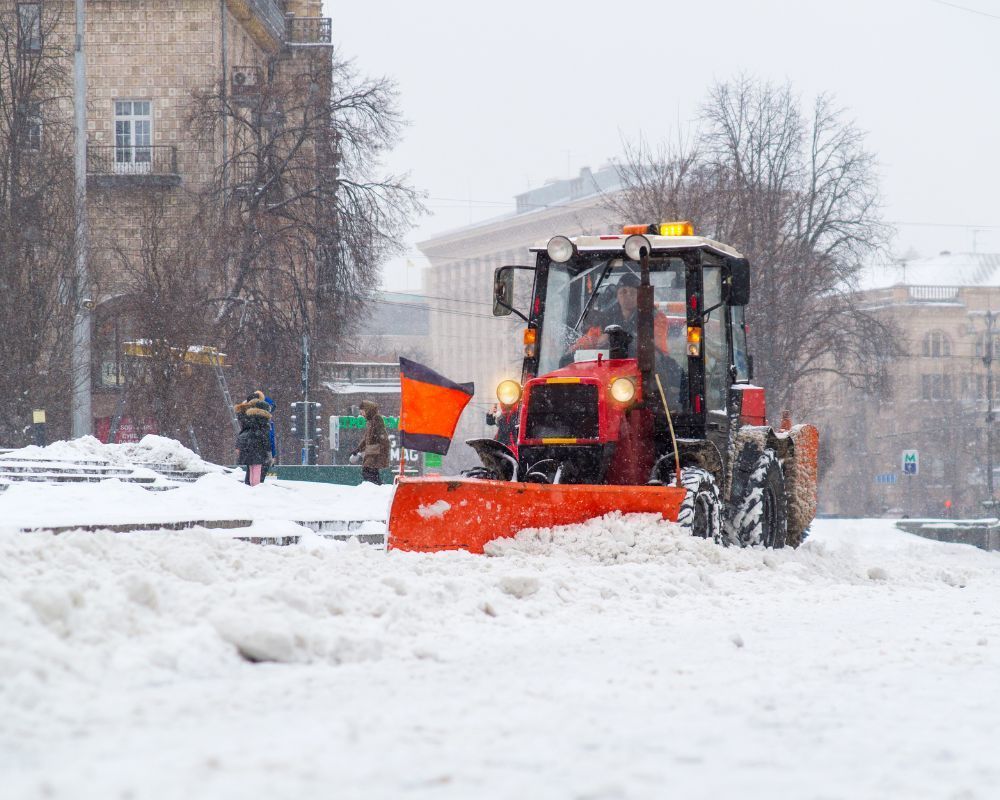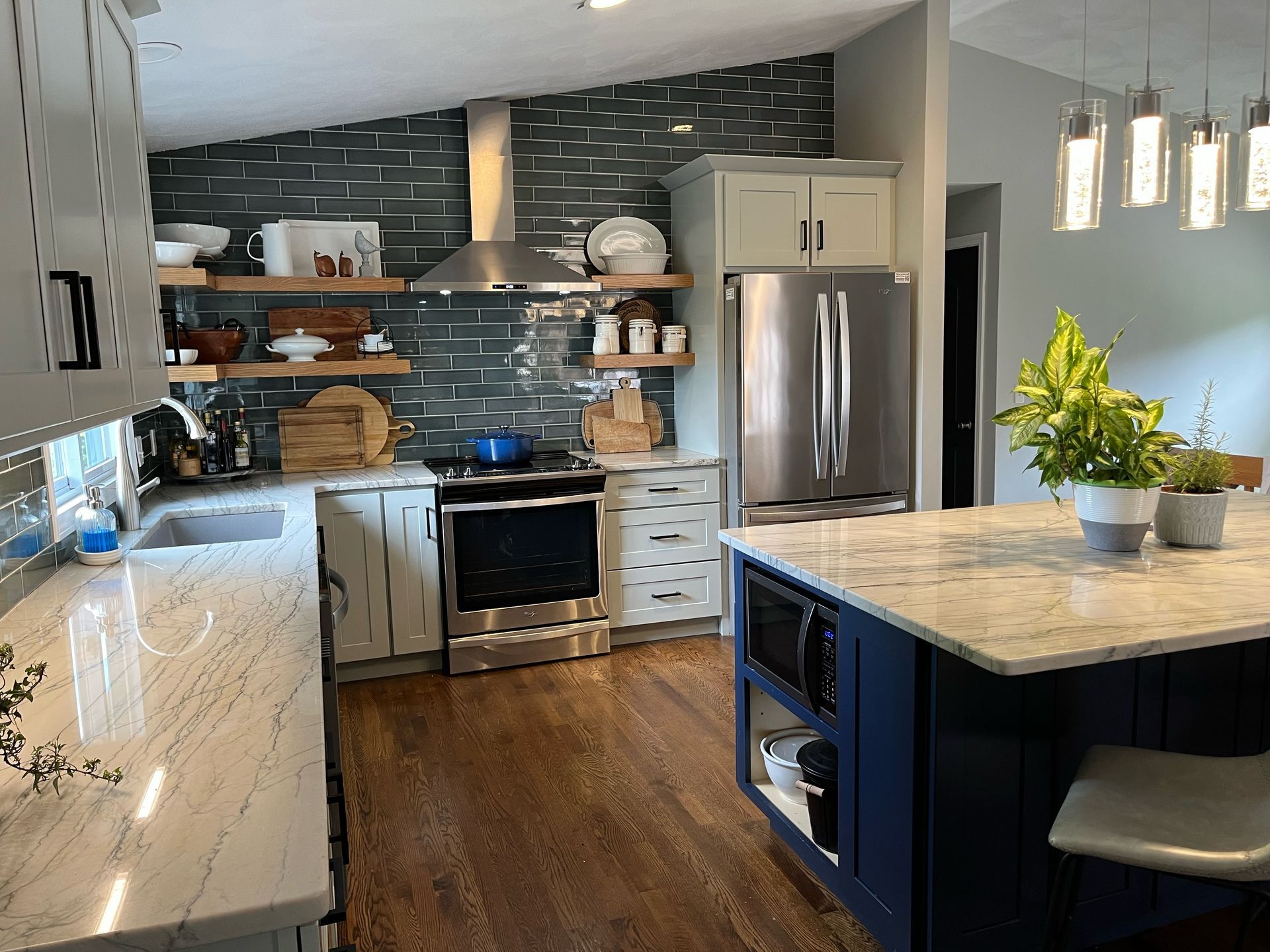By David Antonucci
•
December 16, 2025
If you have an underutilized garage in Providence, Warwick, Cranston, East Greenwich, or anywhere across Rhode Island, you're sitting on valuable potential. Converting your garage into an Accessory Dwelling Unit (ADU) - also called a garage apartment, in-law suite, or rental unit - provides rental income, multigenerational living solutions, or flexible space while costing 30-50% less than building new structures. Rhode Island garage-to-ADU conversions typically cost $80,000-$200,000 depending on size, existing conditions, and finish level - significantly less than new construction ADUs at $150,000-$400,000+. With strong Rhode Island rental markets and supportive ADU legislation, garage conversions offer compelling returns on investment while addressing the Ocean State's housing shortage. Why Garage Conversions Make Excellent ADUs Garage conversions offer unique advantages over other ADU approaches. Cost Savings Over New Construction Existing structures provide significant savings with foundation already in place (saving $15,000-$35,000), roof structure existing (saving $8,000-$20,000), exterior walls present (saving $10,000-$25,000), and reduced site work requirements. Total savings typically reach 30-50% compared to building detached ADUs from scratch. Faster Project Timelines Conversions proceed more quickly with less excavation and foundation work, existing structural shell, reduced exterior construction, and faster permitting in many cases. Most Rhode Island garage conversions complete in 3-6 months versus 6-12 months for new construction. Ideal for Rhode Island Properties Many Rhode Island homes feature detached two-car garages (especially 1950s-1980s construction), oversized garages with second-story potential, garages in ideal locations for ADUs, and existing structures needing minimal exterior modifications. Reduced Environmental Impact Conversions offer sustainability through reuse of existing materials and foundations, less construction waste, reduced new material consumption, and smaller carbon footprint. Maintains Existing Property Character Conversions preserve established property layouts with minimal impact on yards and landscaping, existing building proportions, neighborhood aesthetic continuity, and less disruption than new construction. Assessing Your Rhode Island Garage for ADU Conversion Not every garage suits conversion - evaluate key factors. Size Requirements Minimum garage dimensions include at least 12x20 feet (240 sq ft) for tiny studio, 14x24 feet (336 sq ft) for functional studio, 20x24 feet (480 sq ft) for comfortable one-bedroom, and 24x28+ feet (672+ sq ft) for spacious one-bedroom or small two-bedroom. Standard two-car garages (20x20 to 24x24 feet) convert well into 400-576 square foot studios or one-bedroom units. Structural Condition Evaluate garage structural integrity including foundation stability (no major cracks or settling), wall framing soundness (no rot or damage), roof condition (no leaks or structural issues), and floor slab quality (level, no major cracking). Rhode Island's humidity accelerates deterioration - garages with water damage may need extensive repairs increasing costs. Ceiling Height Adequate height is essential with minimum 7 feet required by Rhode Island code, 8 feet comfortable for most spaces, and 9+ feet ideal for open, airy feeling. Many older Rhode Island garages have 8-9 foot ceilings working well for conversions. Garages with storage lofts may offer additional height. Access and Separation ADUs require independent access. Consider whether separate entrance is possible or already exists, pathway from street or driveway to entrance, adequate distance from main house for privacy, and parking arrangements. Existing Utilities Assess utility access with electrical service capacity (may need panel upgrade), water and sewer proximity, heating fuel availability (gas, electric, oil), and internet/cable access. Garages close to main house utilities cost less to connect. Zoning and Lot Requirements Verify your property meets ADU requirements including minimum lot size (varies by municipality), setbacks from property lines, parking requirements (typically 1 space per unit), and owner-occupancy rules (required in most RI communities). Check with your municipal building department before investing in design. Cost to Convert a Garage to an ADU in Rhode Island Understanding cost components helps budget accurately. Average Total Conversion Costs Basic garage conversions (minimal amenities, standard finishes) cost $80,000-$120,000. Quality conversions (full amenities, good finishes) run $120,000-$180,000. High-end conversions (luxury finishes, premium features) cost $180,000-$250,000+. Per-square-foot costs typically range $150-$350 depending on finishes and existing conditions. Foundation and Floor ($5,000-$15,000) Floor work includes insulation under slab ($2,000-$5,000), leveling or repairing existing slab ($1,000-$4,000), new flooring installation ($2,000-$8,000), and radiant floor heating if desired ($3,000-$8,000). Insulation and Air Sealing ($5,000-$12,000) Proper insulation transforms cold garages into comfortable living space with wall insulation (R-19 to R-21 required in RI) ($3,000-$7,000), ceiling/attic insulation (R-49+) ($2,000-$5,000), garage door removal and wall framing ($1,500-$4,000), and air sealing throughout ($500-$1,500). Rhode Island's four-season climate demands excellent insulation. Windows and Doors ($4,000-$12,000) Natural light and egress require new windows throughout ($2,500-$8,000), entry door installation ($800-$2,500), possible sliding or French doors ($1,200-$3,000), and egress window for bedroom (code requirement) ($800-$2,000). Plumbing Installation ($12,000-$25,000) Complete plumbing includes connecting to main house water ($2,000-$6,000), sewer connection or septic extension ($3,000-$10,000), bathroom fixtures (toilet, sink, shower/tub) ($3,000-$8,000), kitchen sink and appliances ($2,000-$5,000), and water heater (tankless or small tank) ($1,500-$4,000). Electrical Work ($8,000-$18,000) Electrical systems encompass service upgrade if needed ($2,000-$6,000), rough electrical installation ($3,000-$7,000), panel and subpanel ($1,500-$3,500), fixtures and outlets ($1,500-$4,000), and separate meter if rental ($800-$2,000). Rhode Island electrical codes require GFCI outlets in bathrooms and kitchens. HVAC Installation ($6,000-$15,000) Climate control options include mini-split systems (most popular) ($4,000-$10,000), electric baseboard or radiant ($2,000-$5,000), extending existing HVAC (if possible) ($3,000-$8,000), and ventilation (bathroom, kitchen) ($1,000-$3,000). Kitchen Installation ($8,000-$20,000) Complete kitchens feature cabinets and countertops ($4,000-$10,000), appliances (refrigerator, stove, microwave) ($2,500-$7,000), sink and faucet ($500-$1,500), and backsplash and finishes ($1,000-$3,000). Bathroom Construction ($10,000-$25,000) Full bathrooms include fixtures (toilet, vanity, shower/tub) ($3,000-$10,000), plumbing rough-in and connections ($3,000-$7,000), tile work (floor and walls) ($2,500-$6,000), and ventilation ($500-$1,500). Interior Finishes ($15,000-$35,000) Finishing the space includes drywall installation and finishing ($5,000-$12,000), interior painting ($2,000-$5,000), flooring throughout ($4,000-$12,000), interior doors and trim ($2,000-$5,000), and closet systems ($1,000-$3,000). Permits and Professional Services ($5,000-$15,000) Required costs include architectural drawings ($2,000-$6,000), engineering if needed ($1,500-$4,000), building permits ($1,500-$5,000), and impact fees (some RI municipalities) ($1,000-$5,000). Providence, Warwick, and larger cities typically charge higher permit fees than smaller towns. Contingency (10-15% of budget) Unexpected expenses arise in every project - budget $8,000-$20,000 for typical garage conversions. Rhode Island Permitting Requirements for Garage ADU Conversions Understanding regulations prevents costly mistakes. State ADU Legislation Rhode Island law encourages ADUs by requiring municipalities permit ADUs in residential zones, limiting excessive restrictions, and recognizing housing shortage solutions. However, local regulations vary significantly. Common Rhode Island ADU Requirements Most municipalities require owner-occupancy (owner lives in main house or ADU), adequate lot size (typically 5,000-7,500+ square feet), proper setbacks from property lines, parking (1 space per ADU typically), and architectural compatibility. Providence Garage Conversion Rules Providence permits garage conversions with owner-occupancy requirement, zoning compliance, design review board approval, adequate parking provision, and full building permits ($2,000-$6,000). Submit plans showing existing garage, proposed ADU layout, parking arrangements, and utility connections. Warwick ADU Regulations Warwick allows conversions with similar requirements plus specific dimensional standards, parking on property, and building department approval. Cranston Conversion Guidelines Cranston has adopted ADU-friendly ordinances allowing garage conversions meeting size requirements, architectural standards, owner occupancy, and proper parking. Building Code Requirements All Rhode Island conversions must meet minimum ceiling height (7 feet), egress requirements (windows in bedrooms), proper electrical (GFCI outlets), adequate plumbing and ventilation, fire safety standards (smoke/CO detectors), and energy codes (proper insulation). Septic System Considerations Properties with septic systems may need capacity assessment and possible expansion. Rhode Island Department of Environmental Management (DEM) regulates septic systems - conversions adding bedrooms require evaluation. Septic upgrades can add $5,000-$25,000 to project costs. Timeline for Permits Expect 4-10 weeks for permit approval in most Rhode Island municipalities with faster approval for straightforward projects and longer timelines for complex conversions or historic districts. Design Strategies for Garage ADU Conversions Thoughtful design maximizes limited space. Efficient Layouts Small-space planning includes open floor plans maximizing perceived space, combined living/sleeping areas in studios, efficient galley kitchens (6-8 feet long), compact full bathrooms (5x7 feet minimum), and built-in storage throughout. Kitchen Design Functional compact kitchens feature galley layout (most efficient for small spaces), full-size or apartment appliances, adequate counter space (24-36 inches minimum), upper and lower cabinets, and breakfast bar or small table area. Even 400-square-foot studios can incorporate surprisingly functional kitchens. Bathroom Solutions Space-saving bathroom approaches include corner showers saving floor space, wall-hung toilets and sinks, combination washer-dryer in bathroom, pocket or barn doors (don't require swing clearance), and medicine cabinets with integrated storage. Sleeping Areas Bedroom options in converted garages include separate bedroom with door (one-bedroom layouts), sleeping loft above main living space, Murphy bed systems for studios, and alcove sleeping areas with privacy curtains. Maximizing Natural Light Bright spaces feel larger through multiple windows on different walls, skylights in roof (excellent for garage conversions), glass or French doors, and light color schemes throughout. Rhode Island's cloudy winters make good daylighting especially important. Storage Solutions Critical in small spaces with built-in shelving and cabinetry, under-stair storage (if applicable), closet organizers maximizing efficiency, furniture with integrated storage, and vertical storage using wall height. Outdoor Living Integration Extend living space with small patio or deck area, French doors opening outdoors, covered entrance area, and landscaping creating privacy. Step-by-Step Garage to ADU Conversion Process Understanding workflow helps plan timeline and budget. Phase 1: Planning and Design (4-8 Weeks) Initial planning includes feasibility assessment, measuring garage precisely, creating floor plan options, selecting fixtures and finishes, obtaining architectural drawings, and preliminary cost estimating. Phase 2: Permitting (4-10 Weeks) Permit process involves submitting complete application with drawings, responding to reviewer comments, obtaining necessary approvals, paying permit fees, and scheduling initial inspection. Some Rhode Island municipalities process permits faster than others. Phase 3: Demolition and Preparation (3-7 Days) Starting construction includes removing garage door and framing in wall, demolishing interior finishes if existing, removing any hazardous materials, preparing surfaces for new work, and protecting areas not being renovated. Phase 4: Rough-In (2-4 Weeks) Installing systems includes framing new walls for bathroom and bedroom, installing windows and exterior door, rough plumbing installation, rough electrical work, HVAC installation, and insulation throughout. This phase requires multiple inspections in Rhode Island. Phase 5: Interior Finishes (3-6 Weeks) Completing the space involves drywall installation and finishing, interior painting, flooring installation, kitchen cabinet and appliance installation, bathroom fixture installation, interior doors and trim, and final electrical and plumbing fixtures. Phase 6: Final Inspections and Occupancy (1-2 Weeks) Project completion requires final building inspection, obtaining certificate of occupancy, addressing any punch list items, final cleaning, and ready for occupancy. Total Timeline Most Rhode Island garage conversions complete in 4-6 months from initial design through occupancy. Maximizing ROI on Your Garage Conversion Strategic decisions enhance returns. Rental Income Potential Rhode Island ADU rental rates vary by location. Providence studio conversions rent $1,200-$1,600/month. Warwick one-bedrooms command $1,400-$1,800. East Greenwich quality units achieve $1,600-$2,200. Coastal seasonal rates reach $2,000-$3,000+. Annual rental income typically ranges $14,400-$24,000. Calculating Return For $120,000 conversion renting at $1,500/month: annual rent equals $18,000, less 20% for vacancy/maintenance ($3,600) nets $14,400. Annual return is 12% on investment - excellent compared to most investments. Plus property value increases $80,000-$150,000 typically. Value-Adding Features Maximize returns with quality finishes appealing to renters, efficient layouts maximizing space, modern amenities (dishwasher, in-unit laundry), outdoor space (patio, small yard), and smart features (keyless entry, programmable thermostats). Long-Term Flexibility Garage ADUs provide options beyond rentals including space for aging parents, returning adult children, home office or studio, short-term vacation rentals (where permitted), and downsizing while renting main house. Common Challenges and Solutions Anticipate obstacles in garage conversions. Insufficient Ceiling Height Some garages have 7-foot ceilings (code minimum but cramped). Solutions include excavating to lower floor (expensive, $8,000-$20,000), raising roof (very expensive, $15,000-$40,000), or accepting limitation and using light colors, minimizing upper cabinets, and incorporating skylights. Inadequate Natural Light Garages typically have few windows. Address through generous window additions, skylights or solar tubes, glass or French doors, and light interior color schemes. Budget $2,500-$8,000 for window additions. Parking Replacement Converting garages eliminates parking. Solutions include driveway expansion creating new spaces, utilizing street parking if permitted, covering existing parking areas, and parking pads in yard areas. Most Rhode Island municipalities require maintaining adequate parking. Moisture and Drainage Garages often have moisture issues. Resolve with proper foundation drainage, interior and exterior waterproofing, dehumidification systems, and addressing grading problems. Rhode Island's humidity makes moisture management critical. Utility Capacity Existing systems may need upgrades including electrical panel expansion ($2,000-$5,000), septic system enlargement ($10,000-$30,000), water service upgrade (rare), and HVAC extensions. Neighborhood Concerns Address neighbor worries through maintaining property aesthetics, ensuring adequate parking, respecting privacy with strategic window placement, and communicating plans proactively. Garage Conversion vs. New ADU Construction Compare options for your situation. When Garage Conversion Makes Sense Choose conversion when garage is structurally sound, adequate size for intended use, location works for ADU, cost savings significant (30-50% less), and faster completion desired. When New Construction Is Better Build new when garage condition poor requiring extensive repairs, size insufficient for needs, garage location problematic, you want to maintain garage parking, or optimal ADU placement is elsewhere on property. Hybrid Approach Some projects combine garage renovation with additions expanding usable space, second-story addition above garage, or converting portion while maintaining some garage function. Transforming Your Rhode Island Garage into Valuable Living Space Converting your garage into an ADU offers compelling value for Rhode Island homeowners with appropriate properties. At $80,000-$200,000, garage conversions cost 30-50% less than new ADU construction while providing similar benefits - rental income, multigenerational living solutions, and property value enhancement. The keys to successful garage conversion are honest assessment of existing structure, thorough planning addressing all systems, working with experienced professionals, obtaining proper permits, and creating quality space appealing to tenants or family. Rhode Island's supportive ADU legislation, strong rental markets, and housing shortage create favorable conditions for garage conversions. Whether you're in Providence, Warwick, Cranston, or elsewhere in the Ocean State, converting your underutilized garage into functional living space addresses housing needs while generating income or accommodating family. Ready to explore converting your Rhode Island garage into a valuable ADU? Rockhouse Construction is ready to help. Contact us today for expert assessment of your garage conversion potential, accurate cost estimates, and professional guidance through design, permitting, and construction.
